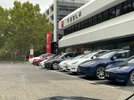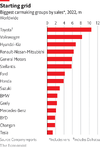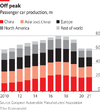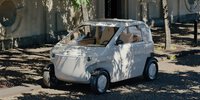Value Collector
Have courage, and be kind.
- Joined
- 13 January 2014
- Posts
- 12,281
- Reactions
- 8,555
There is also the phenomenon of “peak nostalgia”, guys in there 50’s and 60’s might pay up big for their dream car, but once they start to hit late 70’s the are looking to sell them, and the market for the cars that are nostalgic to that generation is drying up, so prices collapse.I think you are spot on, my son offloaded his RX2 coupe for exactly the same reason, also cars for a cause are raffling collectable cars at a hell of a rate these days.














